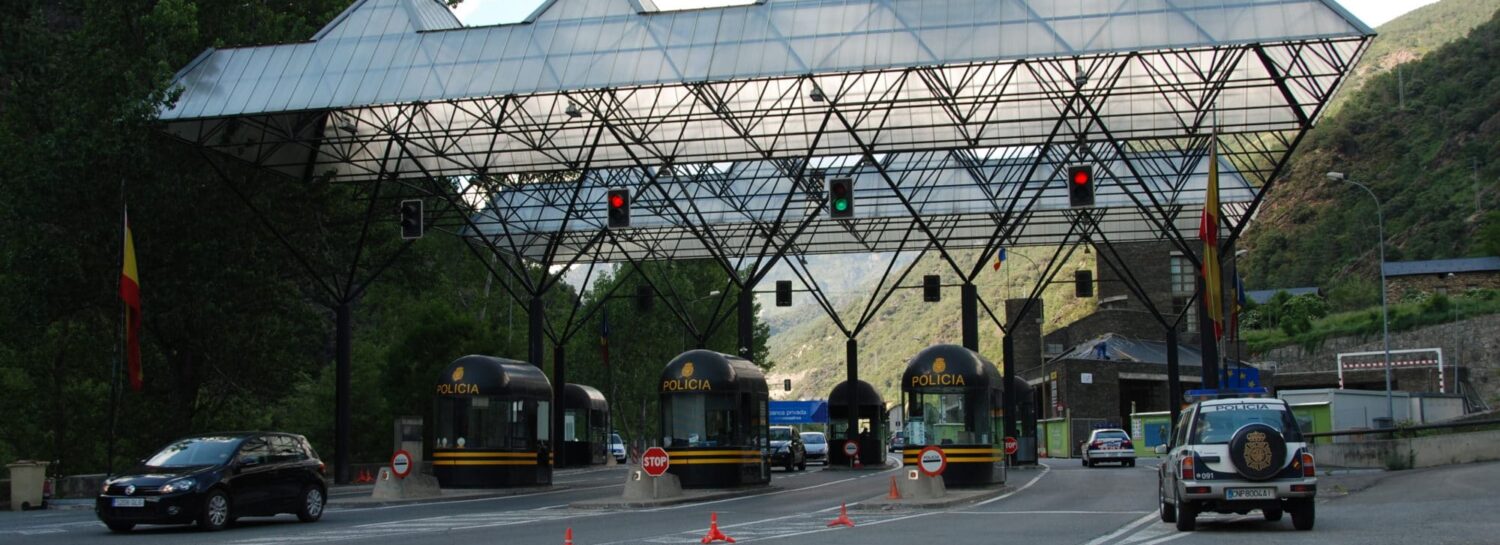It’s not always easy to get a simple answer on topics regarding Andorra. If you’re looking for info on whether or not you need a Schengen visa to visit or leave Andorra, you’ve found the right place.
Whether you are a tourist looking to visit Andorra for a quick trip or a resident wondering about your rights, we’ll walk you through everything you need to know to make sense of a fairly complex situation.
The Schengen Area
The Schengen Area consists of 26 European states, 22 of which are EU states. The area allows freedom of travel within its boundaries for tourists and residents alike, and a lack of border control at their mutual borders.
This allows the entire region to operate as a single jurisdiction (as far as travel is concerned), allowing free movement in Europe.
Member states co-operate with each other to ensure security, and are allowed to travel over internal Schengen borders into another country to catch criminals in the act of committing offences.
At external borders of the Schengen Area however, non-EU nationals need to present a travel document and visa, or a relevant residence permit, along with any supporting documentation for their visit.

Schengen Visas
Entry and travel throughout the Schengen is covered in detail, with examples in this document. Overall, categories are broken down into:
- Citizens or residents of EU or Schengen member states.
- Overseas citizens, exempt from needing to obtain a short-stay visa.
- Overseas citizens, needing to obtain a short-stay visa.
Andorra and the Schengen Area
Andorra has not yet signed on to the Schengen Agreement, meaning it is necessary to pass through border control when travelling into/out of the country, either via Spain or France.
Border controls with both France and Spain are more linked to customs control than immigration. Due to Andorra’s low VAT tax, travellers are often checked to ensure they are not importing greater than allowed quantities of mostly alcohol and tobacco to the Schengen Area.
Andorra began Schengen negotiations in 2015 with the support of Monaco and San Marino, seeking a similar arrangement to that of Lichtenstein.
As it is not possible to fly directly into Andorra, it is necessary to enter the Schengen Area first. This means one must enter the Schengen with an appropriate visa, then enter Andorra. This essentially means Schengen visa rules apply de facto to Andorra.
Tourist Visa for Andorra
Andorra does not require a visa upon entry for visits less than 90 days, however a valid passport or EU identity card must be carried for entry.
In Theory
While a visa is not required for short-term tourists to enter Andorra, in theory a double or multiple entry visa is required for tourists to leave Andorra and re-enter the Schengen area.
Therefore, without a multiple entry visa it is possible to be denied entry to Andorra (since if you enter and are denied entry back into the Schengen, you are stuck in Andorra).
In Practice
Despite border controls, the likelihood of being stopped and asked for travel documents is rare, but it is worth knowing you could be turned away at the border.

Future Residents to Andorra
Those who are non-EU citizens, planning to become residents in Andorra, either through passive residency, self-employment or on a work permit should consider having a valid multiple entry Schengen visa before beginning their application.
Though there are cases of some (especially passive residents) not needing to show this visa to immigration, it is simple enough to arrange to avoid the risk of a delay in your application.
Residents of Andorra in the Schengen Area
For residents of Andorra not from an EU or Schengen country, there’s good news and bad news.
If you have the right to live or work in Andorra (either via residency or work permit), then you have the same rights as a foreigner with residency in France or Spain.
“The entry and circulation regime in France and Spain for foreigners holding an Andorran residence permit is identical to that applicable to foreigners holding a French or Spanish residence permit.”
In Theory
Foreign residents of either Spain or France are allowed unrestricted travel to other Schengen member states for periods up to 90 days. Stays longer than this will likely require a residence permit.
In theory, according to Decree no. 2003-740, foreign residents of Andorra have these same rights.
In Practice
Many residents of Andorra often enter the Schengen area via Spain and France; more specifically Barcelona and Toulouse. As these countries are familiar with Andorra, entry is not a problem so long as one carries a valid residency permit.
Problems can arise when travelling through countries with immigration officials not familiar with Andorra.
During a recent flight to Canada, I myself was questioned while transiting through Germany. I still made my flight, but if the transit time was any tighter I would have missed it, despite being let through.
Others have experienced similar treatment – it’s rarely about laws and more often about lack of knowledge. Though the outcome is almost always being allowed to continue travelling.
Aside from their passport, many foreign residents carry the following to support their movements:
- Residency card
- Copy of a bank statement or onward travel (such as a bus ticket to Andorra in the case of returning home to Andorra)
Some suggest printing a copy of the decree and bringing it with you in case of needing to plead your case in an airport.
Andorra & Schengen Visas: Clear as Mud
Unfortunately for now, this is as clear as it gets. Do know that most people either visiting or residing in Andorra never have any trouble at the borders or when travelling abroad.
With any luck, this article will need a complete review in years to come as future agreements are made!

